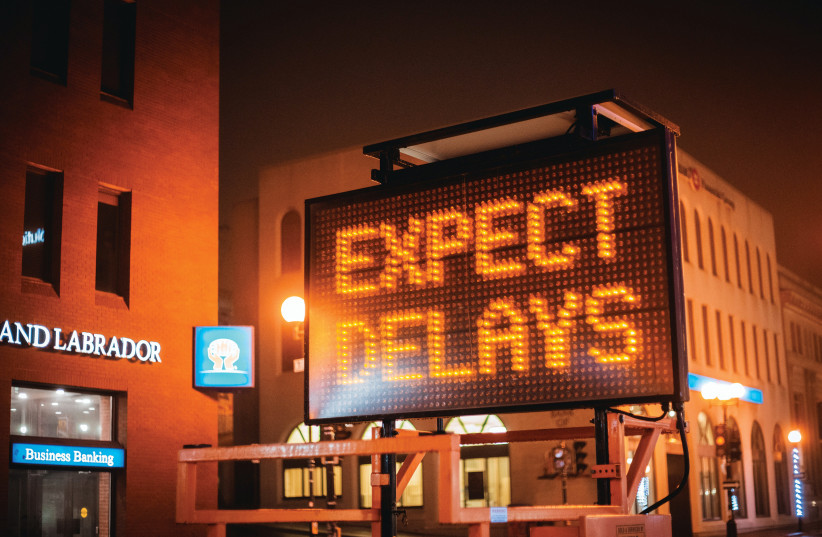Have you recently wondered if public transportation in Jerusalem has improved? Perhaps the prime answer to this question was “yes,” but that would be an initial answer that does not really reflect the situation on the ground.
Public transportation is vital in a big city. Let’s keep in mind that Jerusalem is not only the largest city in the country with close to a million residents, but also a city of government that is visited daily by hundreds of thousands to government offices, academia, hospitals and, not to mention, of course, tourists and pilgrims.
A city of this size in a Western country would be equipped with a number of means of providing proper public transportation for its residents and visitors. Officially, this is what the city authorities, and especially its head, undertook to provide us with, within a reasonable time. The very wide scope of work on the city roads deals with just that: improving infrastructure, laying down light rail tracks, utilizing articulated buses, expanding public transport routes, and everything needed to make a modern city accessible and functional.
Another step taken by the municipality, with the support of the Transportation Ministry and its partners in the field, is the Master Plan for Public Transportation. The transportation monopoly by Egged was found to be unsuitable for the city’s needs and was changed to allow healthy competition that included additional shuttle companies, such as Superbus.

But promises and statements are one thing and facts in the field are another.
All these changes and improvements are mainly based on the assumption that it is the understanding of residents that it is time to forsake the use of private vehicles by most and move over to relying upon public transportation. Otherwise, even with the light rail lines and additional bus routes, the traffic jams that sometimes threaten to paralyze the city will not change.
These days, precisely with the return of tourists and ahead of the summer vacation, the city is more congested than ever and there is great despair. There are those who claim the municipality is not only not doing what is necessary but is even harming its own plans to improve the situation.
Mayor Moshe Leon has explained that as long as the works for the additional lines of the light rail are not complete, the residents cannot be required to give up their private cars altogether. Therefore, parking lots should be made available to them, until these parking lots become redundant and are closed.
Yossi Saidov, a social activist who monitors and critiques public transportation conditions and policy in the city, claims this is not true. “If this were really the intention, millions would not be investing in car parks that will be closed within three to four years.”
“If this were really the intention, millions would not be investing in car parks that will be closed within three to four years.”
Yossi Saidov
Indeed, the municipality’s investments in large car parks raise questions. If there really is no intention to continue to encourage the use of private cars, why build a 1,300 capacity parking lot at the entrance to the new city? Why increase the municipal parking lot to be built in the new Bezalel complex in the Russian compound by another 500 places?
Saidov has questioned whether there really is a desire to encourage residents and visitors to use the light rail. If so, then why is the route on Hebron Road far from the sidewalk, located in the middle of the road, and has a private car lane alongside the light rail? Isn’t this a non-declared invitation to encourage people to continue using private cars? Saidov claims this is exactly the message being sent and as a result, traffic jams continue to tie-up the city.
Perhaps the proof that the authorities do not act logically when it comes to improving transportation and traffic in the city is the fact that every year, Jerusalemites buy 12,000 new cars. These are the thousands of cars that will be added to those that already fill the city streets and roads, causing congestion in the city and making it impossible to free traffic. Anyone who chooses to buy a private car simply does not intend to change their habits and start using public transportation in the city. ❖
